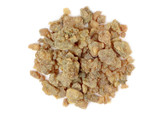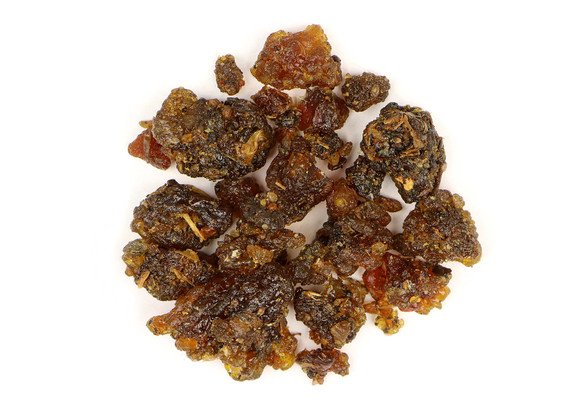Since ancient times, myrrh resin has been used as an ingredient in incense and perfumes. It has a long history of folklore and spirituality in many ancient cultures, as it was used to anoint kings and scent the fabrics of pilgrims traveling to holy places. Myrrh gum resin is harvested from Commiphora myrrha, a low growing, desert tree that exudes a viscous yellow gum, which hardens into a reddish-brown resin. Myrrh resin can be employed in body care recipes, incense blends, and macerated as an extract.
With its smoky, earthy scent, myrrh has a long history as a favorite among all cultures going back to its first discovery in the far reaches of time. A native to Ethiopia and Somalia, it has been used as long ago as 3000 BCE by the Egyptians in embalming, and as an incense burned during cremations and funerals to disguise any foul odors up through the 15th century and is said to be one of the key ingredients in the mythical Egyptian perfume Kyphi. Myrrh has had a great value throughout time; the Romans even valued it as much as gold, using it as security for monetary debts.
Myrrh is a member of the Burseraceae family. It is often prepared as a tincture in Ayurvedic and Traditional Chinese Medicine herbal formulations. Used in conjunction with other ingredients for the development of many cosmetic applications and incense blends.
Precautions
Not for use during pregnancy except under the supervision of a qualified healthcare practitioner. The bitter taste of myrrh may cause nausea and vomiting in persons with sensitive stomachs. We recommend that you consult with a qualified healthcare practitioner before using herbal products, particularly if you are pregnant, nursing, or on any medications.
This information has not been evaluated by the Food and Drug Administration. This product is not intended to diagnose, treat, cure, or prevent any disease. For educational purposes only.









